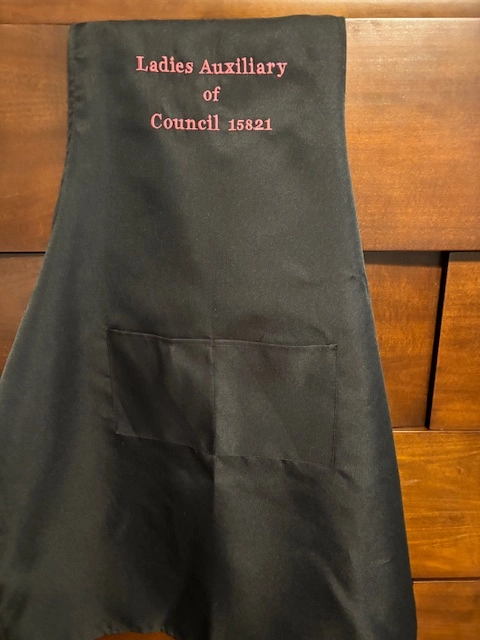The Art of Custom-made Needlework: Unlocking the Secrets to Creating Distinct and Unforgettable Designs
Needlework, a craft steeped in practice and artistry, holds within its intricate stitches the power to change fabric into a canvas of special expression. The tricks to developing customized needlework styles that captivate the eye and leave a long lasting impression depend on a fragile balance of method, creativity, and attention to information. As we look into the world of custom embroidery, we reveal the nuanced interaction in between thread choice, stitch complexity, and design personalization that elevates a mere garment to a job of art. Join us on a trip with the art of custom-made needlework as we unwind the secrets behind crafting genuinely remarkable and unique productions.
Picking the Right Needlework Threads
When choosing embroidery strings, what key factors should you take into consideration to guarantee the best results for your custom-made layouts? The selection of embroidery thread is essential in determining the last outcome of your embroidered layout.
Additionally, the weight or thickness of the thread plays a considerable function in the appearance of the embroidery. Thicker threads can include measurement and structure to your style, while finer strings are ideal for intricate information and little message. Additionally, thinking about the shade fastness and washability of the thread is critical to guarantee that your custom designs keep their top quality and vibrancy over time. By thoroughly examining these aspects and choosing high-grade threads that satisfy your certain needs, you can improve the visual allure and longevity of your embroidered creations.
Discovering Various Stitch Methods
To delve into the world of 'Checking out Different Stitch Techniques', one should understand the details and nuances that each sewing method gives the art of needlework. Various stitch techniques not only include visual rate of interest but likewise add to the total appearance and measurement of the design. One popular stitch strategy is the satin stitch, which involves closely jam-packed parallel stitches to develop a smooth and shiny surface area, perfect for loading in forms and creating bold lays out.
On the other hand, the backstitch is a functional technique commonly utilized for outlining and including great information. It involves stitching in reverse to produce a strong line of needlework. Furthermore, the French knot stitch adds a responsive element to layouts, best for developing textured accents like blossom centers or ornamental touches.
Discovering various stitch strategies allows embroiderers to play with light, darkness, and depth within their styles, boosting the aesthetic appeal and artistic quality of their embroidery tasks. By mastering various stitching methods, one can unlock limitless opportunities for producing one-of-a-kind and remarkable customized needlework items.
Incorporating Personalized Design Components
Having explored the ins and outs of different stitch techniques such as the satin stitch, backstitch, and French knot, the focus currently moves towards incorporating customized layout elements in customized embroidery tasks. Individualized style components play a critical role in making needlework projects truly special and remarkable. One method to integrate customization is by adding initials, names, or substantial dates to the design. This not just adds a customized touch but additionally improves the sentimental worth of the embroidery item.
An additional way to integrate personalized layout elements is by including signs or motifs that hold special significance to the recipient or reflect their passions and character. Including a preferred blossom, animal, or hobby-related symbol can make the embroidery design more purposeful and personalized. In addition, selecting shades that resonate with the recipient or align with the intended motif can additionally enhance the personalization tailored wedding suits of the needlework project.
Understanding the Art of Shade Sychronisation

One trick facet of color coordination is comprehending color concept. This consists of knowing just how different shades connect with each other, the emotions they convey, and just how they can be integrated to produce aesthetically appealing designs. By using shade theory principles, embroiderers can develop unified color schemes that enhance the total appearance of the layout.
In addition, taking notice of comparison is essential in color sychronisation. Utilizing contrasting shades can assist certain elements of the style pop, boost legibility, and create an aesthetically vibrant needlework piece. By mastering the art of shade sychronisation, embroiderers can boost their styles and create memorable items that resonate with clients and viewers alike.
Enhancing Texture With Advanced Needlework Stitches
French knots, as an example, are perfect for check over here adding tiny, increased dots to your design, imitating the appearance of grains or producing a textured surface area. Bullion knots, on the other hand, can be made use of to develop twisted, ropelike sue's alterations aspects that include a lavish feel to the embroidery. Seed stitching includes tiny, scattered stitches that can complete locations with a polychromatic appearance, while turkey job produces fluffy, dimensional accents reminiscent of animal fur or foliage. Explore these advanced embroidery stitches permits you to push the borders of conventional embroidery and create absolutely distinct and visually attractive textures in your layouts.
Final Thought
Finally, the art of custom needlework includes a combination of choosing the ideal threads, exploring different stitch techniques, integrating personalized style components, mastering shade sychronisation, and boosting appearance with advanced stitches. By understanding and executing these crucial elements, embroiderers can develop one-of-a-kind and remarkable layouts that showcase their imagination and ability. Embroidery lovers can open the secrets to creating attractive and bespoke items that attract attention and leave a lasting perception.